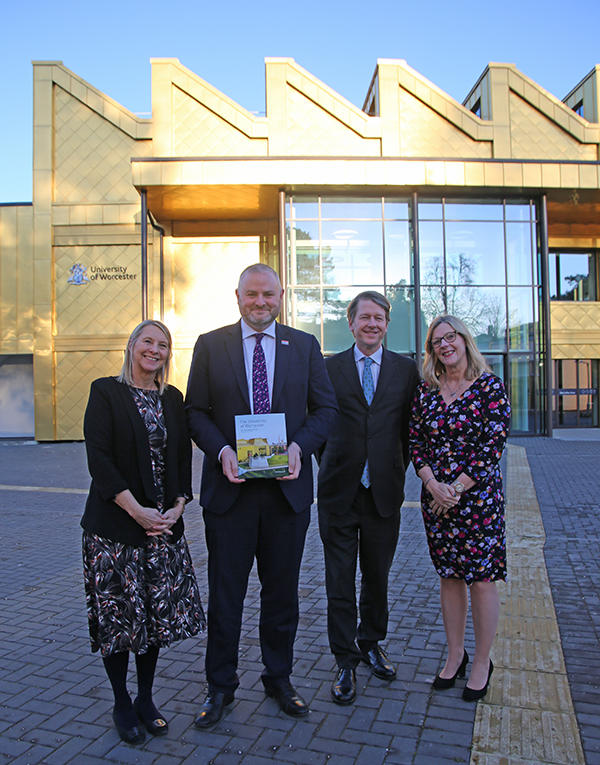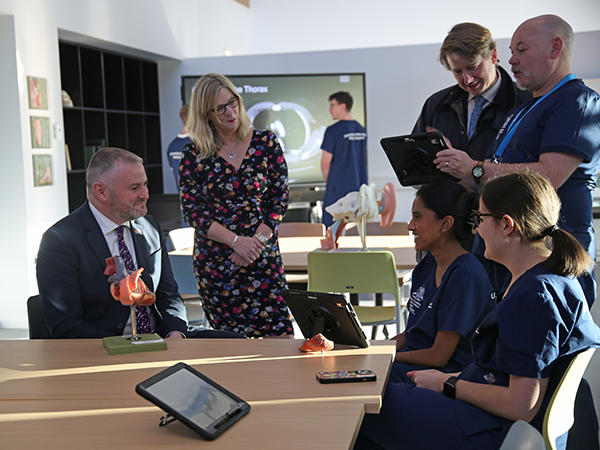The Minister of State for Health and Secondary Care, Andrew Stephenson CBE said he was impressed with the University of Worcester’s health students during a recent visit.
 The Minister of State for Health and Secondary Care, Andrew Stephenson CBE (second from left), visited the University's new Elizabeth Garrett Anderson building for health and medical education.
The Minister of State for Health and Secondary Care, Andrew Stephenson CBE (second from left), visited the University's new Elizabeth Garrett Anderson building for health and medical education.
Mr Stephenson was given a tour of the University’s new Elizabeth Garrett Anderson building, where he met both Medical and Physician Associate students and saw the state-of-the-art equipment in the specialist anatomy lab, before going to the Elizabeth Casson building to meet Paramedic Science students.
Speaking afterwards, he said: “I have been really seriously impressed by what I’ve seen. The students I met were enthusiastic and clearly enjoying their learning experience.
“This new medical school is at the heart of government plans to deliver on the Long-Term Workforce Plan for the NHS and I am delighted that we have already announced additional places for next year, which will mean there will be more people to serve the NHS locally.”
The University’s Three Counties Medical School welcomed its first cohort of students in September, with 20 UK students funded through generous donations from the Kildare Trust and the NHS locally, as well as 24 self-funded international students. In October, the University was offered an allocation of 50 government-funded places for 2024.
The Elizabeth Garrett Anderson building is a specialist new facility for health and medical education with mock GP consultation rooms, an anatomy suite featuring high-tech models, seminar rooms and collaborative learning spaces.

Professor Sally Moyle, the University’s Pro Vice Chancellor Health and Science, said: “We were pleased to welcome the Minister, Andrew Stephenson, to the University and give him the opportunity to meet some of our superb health students. We spoke to him about funded medical places next year and our commitment to ensuring the future pipeline of doctors for the region and about regulation for the Physician Associate profession which is hugely important.
“As a Community First Responder himself, he seemed genuinely interested in the students’ experience and how we can encourage more people to consider working in the health professions.”